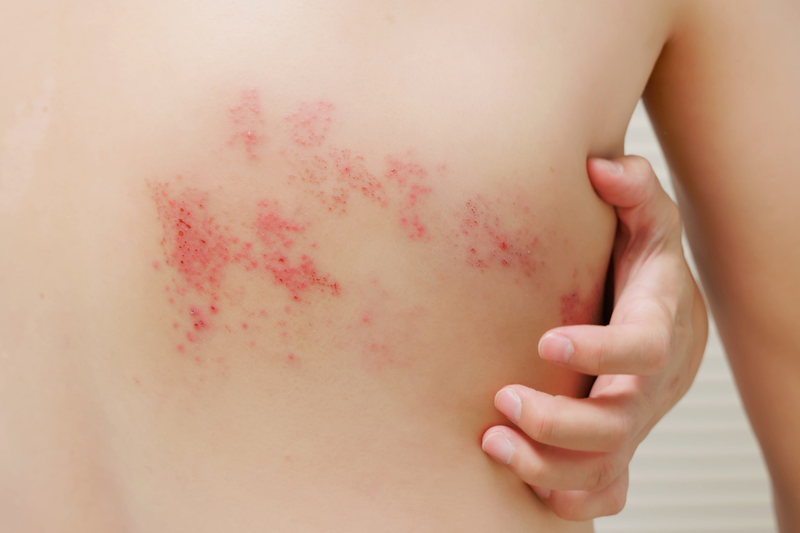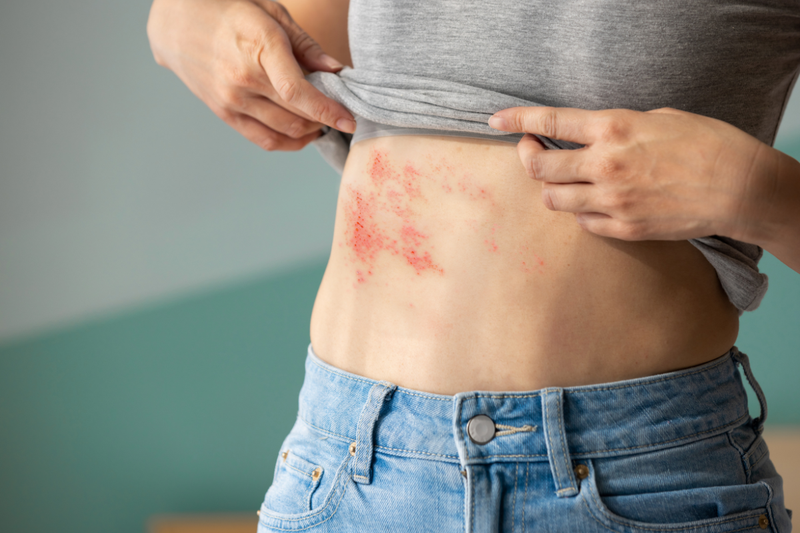Understanding Shingles: Causes, Symptoms, and Treatment
Shingles, also known as herpes zoster, is a viral infection caused by the reactivation of the varicella-zoster virus (VZV), the same virus responsible for chickenpox.
It presents as a painful rash typically appearing as a single stripe of fluid-filled blisters on one side of the body. This comprehensive guide aims to provide a deeper understanding of shingles by exploring its causes, symptoms, available treatment options, and the potential complications associated with the condition.
Is a person with shingles contagious?
Yes, individuals with shingles can transmit the varicella-zoster virus to others, particularly those who have never had chickenpox or the chickenpox vaccine. However, it's essential to understand that shingles itself is not directly contagious. Instead, the virus causing shingles can lead to chickenpox in susceptible individuals upon direct contact with the fluid-filled blisters of a person with shingles. Despite this, the risk of transmission is relatively low compared to the highly contagious nature of chickenpox itself.
What triggers a shingles outbreak?
Shingles outbreaks are primarily triggered by the reactivation of the varicella-zoster virus, which remains dormant in nerve tissues following a previous chickenpox infection. Various factors can contribute to this reactivation, including advancing age, weakened immune function, stress, and certain medical conditions or treatments that compromise the immune system. Research suggests that individuals who have had chickenpox vaccinations may still develop shingles, albeit at a lower risk compared to those who have had natural chickenpox infections.

What are the first signs of shingles?
There are two stages in the development of shingles:
Prodromal stage
During the incubation period of 10-21 days, the virus multiplies and travels within the nerves running along the side of the body close to the skin. In the early (or prodromal) stage, there is no rash, but affected areas have symptoms that can include:
- Pain;
- Severe itching;
- Sensitivity to touch;
- Tingling, and;
- Numbness.
In addition, you may feel one or more of the following symptoms:
- Headache;
- Aversion to light (photophobia);
- Fever;
- Chills;
- Lack of appetite;
- Stomach ache or diarrhoea, and;
- Fatigue.
Active stage
The active stage begins a few days after the prodromal stage. A painful, irritating rash with blisters can appear anywhere on the body, but typically shows up as a band or strip only on one side of your body or face. The blisters that form are filled with clear fluid. The fluid may turn cloudy after a few days, then turn yellow and dry up, leaving dry scabs.
Overall, the shingles rash usually heals up within 2 to 4 weeks.
Risk factors
Risk factors for shingles generally include anything that weakens the body's immune system, including, but not limited to:
- Old age (over 50 years);
- Young age (first year of life);
- Immune-suppressive or -weakening medications such as chemotherapy;
- Existing diseases, including HIV / AIDS and cancer;
- Stress, and;
- Malnutrition.
- In addition, shingles can also develop in newborn babies whose mothers were infected with chickenpox during pregnancy.
What not to do when you have shingles?
Managing shingles effectively involves avoiding certain actions that could exacerbate symptoms or lead to complications. It's crucial to refrain from scratching or picking at the blisters, as this can increase the risk of infection and scarring. Similarly, touching or scratching the rash and then touching other parts of the body should be avoided to prevent the spread of the virus. Additionally, wearing tight or restrictive clothing and applying tight bandages or adhesive dressings can irritate the rash and worsen symptoms. Finally, individuals with shingles should avoid close contact with individuals who have never had chickenpox or the chickenpox vaccine to prevent the transmission of the virus.
What are the available treatment options for shingles?
Treatment for shingles aims to alleviate symptoms, shorten the duration of the outbreak, and prevent complications. Antiviral medications, such as acyclovir, valacyclovir, or famciclovir, are commonly prescribed to reduce the severity and duration of the rash and alleviate pain. Pain management strategies may include over-the-counter pain relievers, such as ibuprofen or paracetamol, as well as topical treatments like calamine lotion or lidocaine patches. In some cases, corticosteroids may be prescribed to reduce inflammation and pain associated with shingles.

What are the potential complications of shingles?
While most cases of shingles resolve without serious complications, certain individuals may experience long-term effects or complications. Postherpetic neuralgia (PHN) is one of the most common complications of shingles, characterised by persistent pain that lasts long after the rash has healed. Other potential complications include bacterial skin infections, neurological problems, such as facial paralysis or hearing loss, and vision-related issues if the shingles rash affects the eyes.
Conclusion:
In conclusion, shingles is a viral infection that can cause significant discomfort and complications if left untreated. By understanding the causes, symptoms, available treatment options, and potential complications associated with shingles, individuals can take proactive steps to manage the condition effectively and minimise its impact on their health and well-being.
Have you got more questions about your health? With Health&'s user-friendly personal health assistant, you can easily navigate through a series of simple questions to receive tailored support in just minutes.
Health& makes it easy to simply enter your search query in our A-Z library of medically-verified health content, ensuring you find the best matches for your situation. Explore more health content, take early-intervention risk assessments, store your medical records and more! Discover the support you need with the Health& app, empowering you on your journey towards living better, longer.

